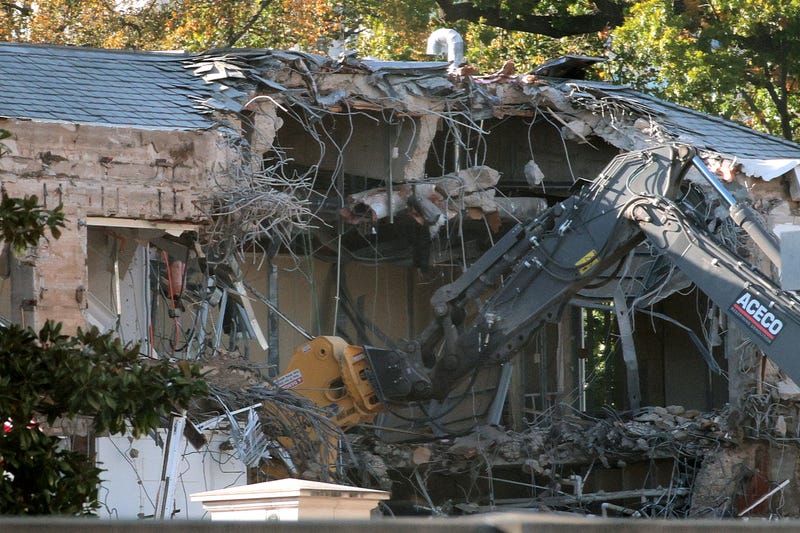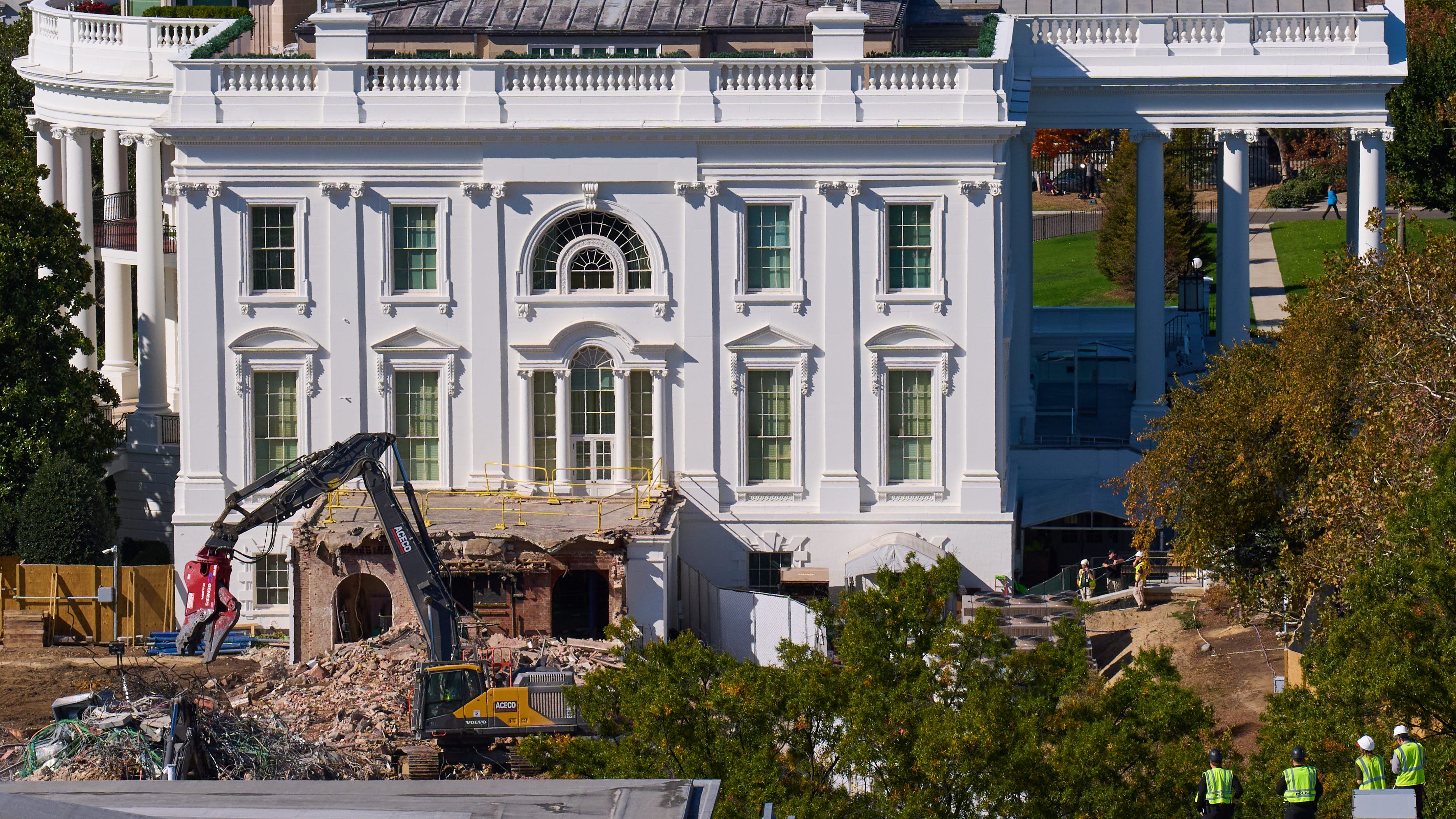
Buffalo, N.Y. (WBEN/AP) - Last week, work began on demolition of the entire East Wing of the White House in Washington, D.C., as President Donald Trump moves forward with construction of a ballroom worth an estimated $300 million.
The two-story East Wing consisted of drawing rooms and offices, including workspace for first ladies and their staffs, and has now been turned into rubble. President Trump said last week Wednesday that keeping the East Wing as is would have "hurt a very, very expensive, beautiful building," referring to the ballroom he said presidents have wanted for years.
Trump adds he "and some friends of mine" will pay for the ballroom at no cost to taxpayers.
Preservationists in the nation's capital had urged the Trump administration to halt the demolition, for which approval was not required, until plans for the 90,000-square-foot ballroom could go through the required public review process.
The National Trust for Historic Preservation said the review process, which includes public comment, would "provide a crucial opportunity for transparency and broad engagement — values that have guided preservation of the White House under every administration going back to the public competition in 1792 that produced the building’s original design."
In a letter, the Trust also expressed concern to the National Capital Planning Commission, the National Park Service and the Commission of Fine Arts that the size of the proposed ballroom will overwhelm the Executive Mansion, which stands at 55,000 square feet (5,109 square meters) "and may permanently disrupt the carefully balanced classical design of the White House."
Local preservationist Tim Tielman with the Campaign for Greater Buffalo says what President Trump has done to the East Wing of the White House is a travesty.
"First off, it's lawless, something like this - a president or even a governor - summarily demolishing part of the Executive Mansion, which, of course, is not directly owned by the occupant," said Tielman in an interview with WBEN. "It's owned by either the state or the nation, where that building is. And the White House is federal property, so it's owned by all of us. And the current occupant does not have the right to simply go in and demolish it, and a significant section of it.
"We've never seen something like that. And particularly Washington, it's our national capital. There are layers of regulations to preserve what all Americans want to see. It's one of the most famous buildings on the planet, the White House."
Tielman points to Washington as having some of the best architectural and landscape architectural design minds in the country, who donate their services on the federal and local level.
In New York State, Tielman says good historic preservation laws were passed in the '60s based on the National Historic Preservation Act that much of the local legislation in Buffalo is based on.
"Rarely do you see someone locally or in New York State going ahead and demolishing something overnight," Tielman noted.
Tielman also noted there are workarounds, which he points to the recent emergency demolition of the Great Northern grain elevator, which he was at the forefront of trying to prevent.
"I believe in that case that Mayor [Byron] Brown was given the correct information, but he was dead wrong in insisting that there was emergency. I think the judge who oversaw the case, he refused to accept the information that there was no emergency. And I think the demolition process, when it occurred, you can see that the building, no matter how much of it they tore down, whatever remained could have remained standing for 1,000 years because of the type of construction," Tielman said. "We do see people, and I believe in my opinion, they weren't acting in good faith. And that occasionally happens, and there have to be safeguards on it. Usually, the backstop locally is the courts, and unfortunately, I also think the court decision was a poor decision."
Given the demolition of the East Wing of the White House in Washington, Tielman feels hopeful that people see the purpose of historic preservation laws and the necessity to have proper reverence and deference to historic structures and monuments, because of what they represent for the people.
"Whether it's our City Hall, for example, which today people couldn't imagine demolishing part of it, or the Great Northern or part of the Richardson Complex. These are our calling cards, it's a reason why a lot of people visit Buffalo. For us, it can fill us with pride, and it's symbolizing Buffalo's status," Tielman said. "This is what our leaders of the past bequeathed on to us, and it is our role and our job to celebrate the individuals who did this, but also to recognize that they did it in Buffalo, New York with a system that was set in place to last in perpetuity.
"No one designed a Delaware Park or a South Park thinking, 'OK, I'm just doing this for the next 20 years.' You're thinking, 'This is our gift to the future.' That's what people building City Hall in 1932 were saying. They were saying, 'This is going to encapsulate everything we believe Buffalo is, and everything we want to think about what Buffalo stands for. It's all embodied in that building from the architecture, but certainly also the decoration on the inside, across the portico in front of the building. Just as every element of the White House or the U.S. Capitol speaks to American values."
The structure that once stood as the East Wing of the White House was originally built in 1902 before being expanded upon in 1942.

